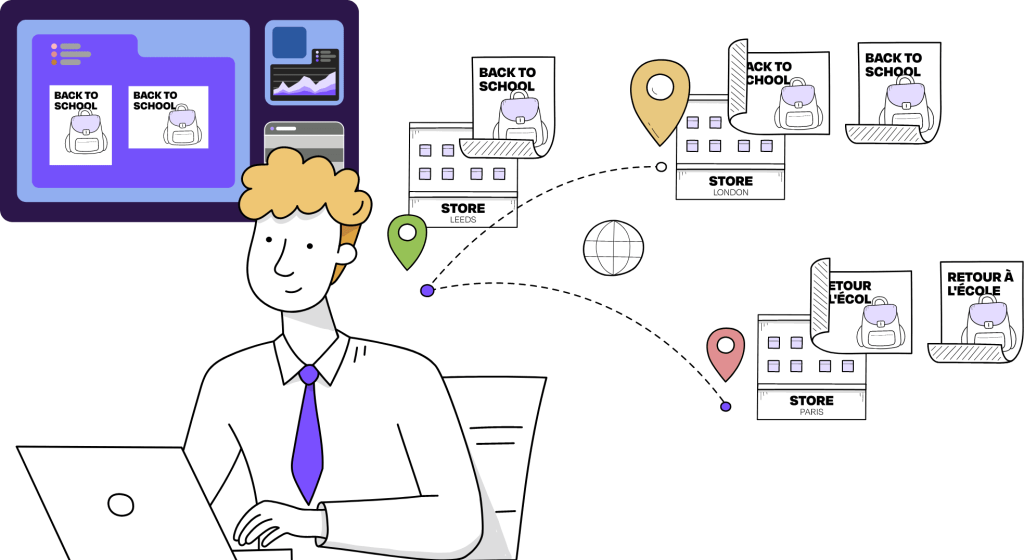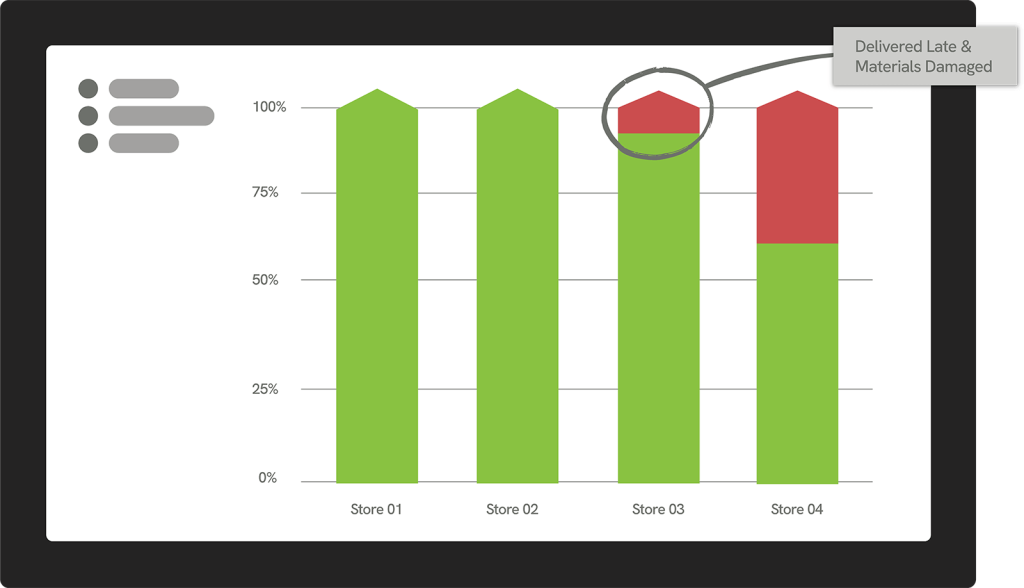Beat the Competition with In-store Marketing Campaigns.


When your key competitor opens a store next to you, it’s easy to accept that you will lose business. While brands like Mcdonald’s and Burger King consistently battle over consumers in public TV ads, battles are often won and lost in-store. However, you don’t want to run a campaign in every store; you only need to run it in specific stores near your competitors. So let’s explore how you can do that.
As a general rule, competitor campaigns are deployed for challenger brands to capture and maintain market share. They typically aim to deride the competition or highlight how their product is better than a competitor’s using a combination of mass media and targeted advertising channels.
The use of mass media channels will generally have a longer-lasting impact on brand salience and brand recall. This means that more customers will naturally choose your brand in the future. However, brands must also consider the short-term impact and run targeted promotions to specific audiences or locations at the point of purchase to drive incremental growth. Just running mass media campaigns won’t be enough if you can’t get people to buy and use your product.
So, when the inevitable happens, and competitor stores are opening next to yours, you will typically have 2 options:
While many of us would like to choose option 2, many retailers and restaurants don’t have the budgets to compete with radio, press and TV adverts. Instead, you need to go to battle where customers make their buying decision.
Fortunately, as discussed in our article 2 weeks ago, in-store marketing and print advertising are some of the most effective channels for driving revenues.
However, despite it being a more cost-effective channel, this isn’t as simple as it seems either. You might have hundreds or thousands of stores within a territory, and you won’t need to run competitor campaigns in every store. Positioning your product against a competitor that is nowhere near you won’t have the same impact. In addition, other stores you operate might be near different competing brands.
So, you will need to be targeted about which stores you run your campaigns in.
Here’s how you can run targeted promotions at just those stores next to your competitors:
Firstly, you need well-informed competitor and customer research. You will need to understand why your customers choose you over competitors and vice versa. Understanding light shoppers or less loyal customers will inform the foundation of your messaging and your campaigns.
Issue customer surveys in stores near different competitors and compares results and answers. In addition, conduct in-person surveys to ask questions as people leave your competitor’s stores.
Armed with this insight, you can determine which products customers prefer, whether the price is a consideration, and what might particularly appeal to customers.
It’s important not to run campaigns targeting your most loyal customers. Those that nearly always buy from you will continue to do so despite short-term competitors with new promotions. You want to focus on switchers primarily – those that are not loyal to you or your competitor.
You can learn more about targeting “switchers”, including how to identify them, in this article about marketing for retail in a recession.
Alternatively, you can learn more about different buyer segments and demographics here.
Now you are clear on who you targeting and the core message, you can begin to create your in-store marketing campaign.
This includes:
The most important part of any campaign is the creative. So, when building your campaign, focus on getting that right and work with an agency if needed. Working with an agency or disparate design team can be complex. However, you can use an artwork automation system to streamline this process and align all parties.
Next is to ensure your promotion runs in the right places in stores. Most of your campaign will be focused on driving footfall, so you’ll want window posters or outdoor displays. But don’t forget to remind shoppers of your compelling offer once they step inside.
It’s critical to consider the surroundings of each location as well. Is your store in a city centre with a digital display space outside? Is it in a retail park where you could direct customers to your store as they enter? The journey to shoppers visiting your store begins well before they reach you. And while mass-media communications may be unavailable, consider other options to reach your customers earlier in their journey.
Once you know all the different formats for your creative, which assets to design and where you will place them, the next step is to distribute your collateral.
To run targeted campaigns, you need to be able to distribute your creative to the right stores. It is no good to send the same materials to each store as that won’t resonate with your target audience, and it will lead to significant waste if you send all the materials to every store.
In addition, you may choose to run personalised in-store marketing where you tailor the message to each store. This adds complexity at the design and distribution stages to ensure you send localised materials to the exact right locations.
You will need an up-to-date store profiling system that maintains information about which stores are located where, which ones are near your competitors, and any other special features about them.
Then you can ensure you’re only running competitor campaigns in the right locations and issuing the correct materials that can be displayed in each location.

You’ve done the hard part and created your campaign, but if it doesn’t look right in the store, it will never work. You need to ensure your campaign is executed accurately, that the right materials have gone to the correct locations, and that it’s been implemented to your specifications.
Issue clear instructions to each location alongside your marketing packs. Then establish a feedback loop between installation and marketing so they confirm when displays are set up, report any issues and provide photographic evidence of the completed task.
This will provide real-time visibility of how the displays are set up, and you can quickly identify and resolve any issues with the execution.
By taking this step, you can be confident in analysing the performance of the campaigns.
Finally, you can only improve that which you measure. It’s a significant undertaking to run targeted in-store promotions, and you need to measure the effectiveness of your campaigns.
Link your POS data to your campaign data and analyse the results. This will tell you if your message or promotion resonates with your customers. Ideally, you will see a noticeable lift during campaign and non-campaign periods. In addition, you shouldn’t see a significant dip when your competitor’s store opens.
Analyse this information to continuously iterate and improve. And with the basics in place, you can run more targeted campaigns in other locations.

Executing multiple targeted in-store marketing campaigns across different locations can be a headache at best and a logistical disasterpiece at worst.
The spreadsheets alone to manage the different components going to each store and maintaining store databases are enough to make even computer scientists run home.
At Colateral, we aim to make targeted in-store advertising as easy as digital marketing. To learn more about how to automate in-store marketing campaigns, reach out to a team member.
For more tips to run more effective in-store campaigns, subscribe to our mailing list.
 Thought Leadership
Thought Leadership
Retailers were once the heartbeat of local communities There was a time that what made...
 Thought Leadership
Thought Leadership
Nothing captures someone's attention more than a message tailored specifically to them. And shoppers now...